One of my favorite species for bonsai is the dwarf jade.
A great deal of traditionalists don’t like them, though. The refrains are
“it’s not a real tree”
“the leaves are funny”
“I always over water them”
…etcetera etcetera etcetera….

Looks like a bonsai to me, how about you?
Jim Smith has been growing them as bonsai for 30 years. Is that long enough for people to accept them as bonsai? Many people kill shimpaku junipers yet they are still considered, along with Japanese black pine, the ultimate bonsai.
A juniper is easier to kill than a portulacaria.
It’s my aim in this post to demystify the dwarf jade a bit and maybe convince some of its detractors out there that this tree (it is a tree) is a legitimate bonsai.
It is native to the southern part of Africa. It is called “spekboom” in Afrikaans. Which is literally ” fat pork tree”
In that area the portulacaria makes up to about 80% of an elephants diet. But the growth habit of the tree and the eating habits of the elephants ensure that the plants never get overgrazed. The elephants eat from the top down and make a mess, dropping pieces on the ground. The tree responds by budding back densely and all those pieces that fall, root where they lie, making more trees. Cool, huh?
There are areas in South Africa called “spekboomveldt” which are dense thickets of portulacaria. The tree is so prevalent in the countryside there is even a river called the Spekboom river.
The elephant teaches us 2 things:
1. Trim them often, they respond well.
2. Take cuttings. It’s easy. (I’ll tell you how.)
Amazingly, the portulacaria is a plant that can switch how it performs photosynthesis. The C3 method (which is how most plants work) to the CAM method (how succulents work) and back.
Photosynthesis (simply) is taking water and carbon dioxide and,using the energy of the sun, jamming the molecules together to create sugar and oxygen. This process occurs during the day. The co2 is taken in through pores (called stomata) that can open and close.
At night the plant uses the sugar and oxygen in the air and gives off co2. This is respiration.
A regular c3 photosynthesis plant will, in times of high heat and humidity, revert to respiration during the day. And this weakens it.
The portulacaria, though,switches to CAM photosynthesis (which is the stomata closing during heat of the day but, then opening at night, taking in co2, storing it, and making sugar in the day when the sun is out.)
An efficient adaptation in the desert.
By closing the stomata the plant will not lose water through transpiration (which is how plants move water and nutrients from the roots to the tips, like blowing on a straw that is in a liquid. The liquid travels up the tube from the force of the blowing…..)
Anyway, back to some bonsai.

There’s the master himself – Jim Smith
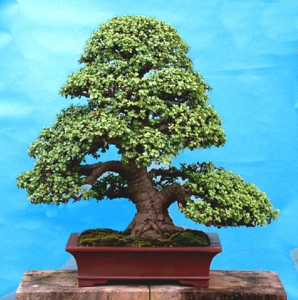
And a mature, medium sized tree.

This is how most people see them.
If that’s the only way you see a tree you wouldn’t think much of that species either, now, would you?
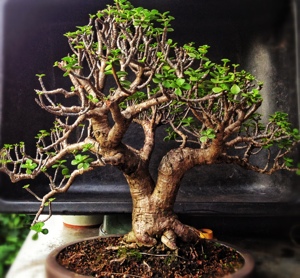
This is one of my oldest. I just cut it back so it’s a little sparse but you can see the structure. Looks like an old live oak tree. Examining it, I see it needs some wiring, but it looks good as it is too.
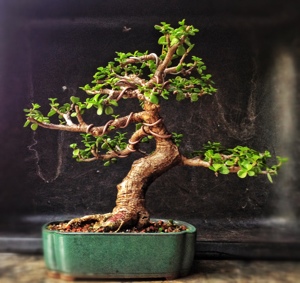
Here’s one still in training. Needs some more wire too but, as I’ll explain later, that can wait.
Let’s style one from a stock plant.
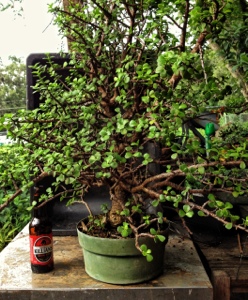
I got this from Jim Smith originally.

A lot of branches to work with. I got it to take cuttings of off as well as a specimen tree.

This one branch, if it were in a 8 inch pot, would go for anywhere from $15- $25 at a bonsai nursery.

To root it, simply allow the cut end to dry for a few days and put it into some coarse soil. I use leftover bonsai soil but people like Jim or Erik use a regular potting soil. Don’t water it until you see new growth. That’s right, I said DON’T.
Most plants need water to throw roots out. So it’s the presence of water that grows roots.
A succulent is backwards. The absence of water is what stimulates root growth. The roots are thrown out to seek water.
So you don’t need humidity domes or rooting hormone or mist systems.
(Remember those elephants?)
Just stick the cutting in soil in a pot and let it grow.
The only thing that I’ve seen used (but not used myself, so I don’t know the efficacy of it) is a powdered fungicide that the cutting is dipped into that helps prevent the cutting from rotting.
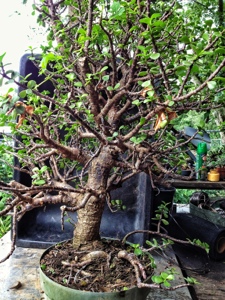
There’s a good view of the front.
Now some trimming.
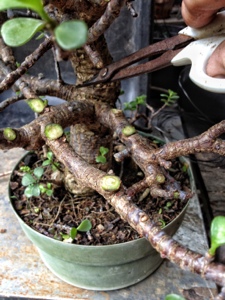
Prune all the branches growing straight up.
And those growing in awkward places
Also prune larger calliper branches out of the top of the tree and cut the branches for taper. The further out on the branch, the finer the branching.
This is one of those “illusion” design techniques used to make a small tree look like a large, old tree.
The catchphrase is ” taper, taper,taper!”
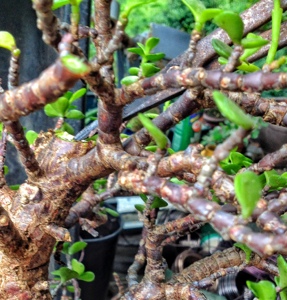
The branch just to the bottom right will be the new top branch. Along with the ones around it. It is a crown you should aim to build. Not a single “apex”.
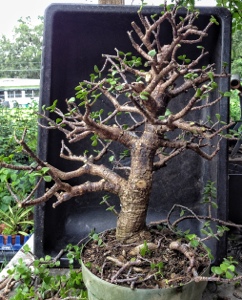
There we are. A little less haphazard.
I didn’t trim all the upward pointing branches
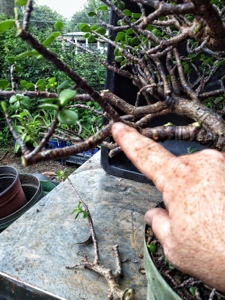
If I trim this I waste the time it took to grow it.
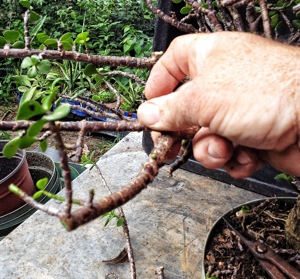
With some wire we can turn this branch into the beginning of a pad.
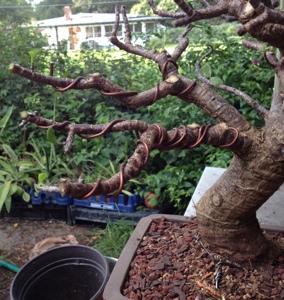
Like so.
Let’s deal with the roots now.
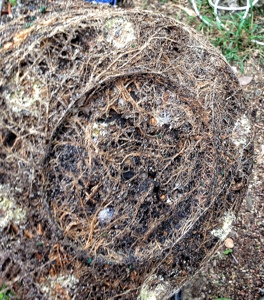
Just a little scary.
It is with the roots where we can kill this plant. So we will be gentle.
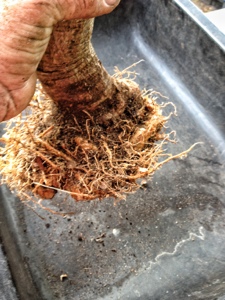
Well. Not that gentle. The roots needed a good raking. Real good. I use a single hook as opposed to the 3 tined rake that comes with most tool sets.
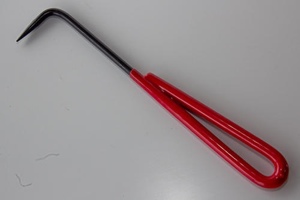
Like so. I made my own but they are available in all the stores and online.
It’s my experience that the single hook does less damage to the roots.
I made sure that there were no crushed or split roots and that all the cuts were clean.
To place the tree in the pot

Fill it with some soil. Make the pile higher where the center of the root ball will be.
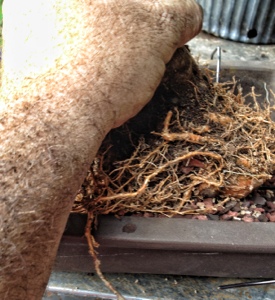
Push down and twist it into the soil.
Don’t lift it like this but

It should go into the soil. Be gentle but make sure it goes into the soil.
This way it will eliminate any errant air bubbles under the root ball.
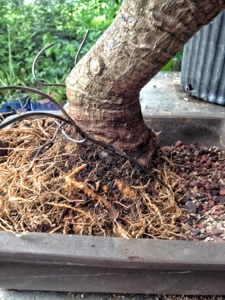
And,of course, I always tie the tree in.
At this stage I don’t worry about looks. I don’t want the tree to move. We’ll worry about aesthetics later. 2-3 years from now.

I could wire the tree now but I don’t have a need. This will bend easily
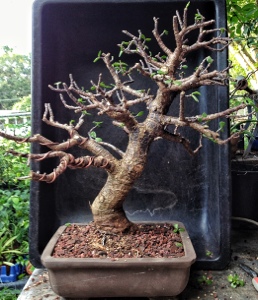
That bend in the trunk at the bottom left was completely hidden beneath the soil. Quite the pleasant surprise.
The branching is all there for a good tree. I searched long for this tree among the hundreds available at Jim’s nursery.
There might be some left. Maybe. I’m greedy.
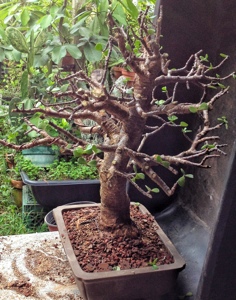
I think you’ll agree.
I worked on all these today.
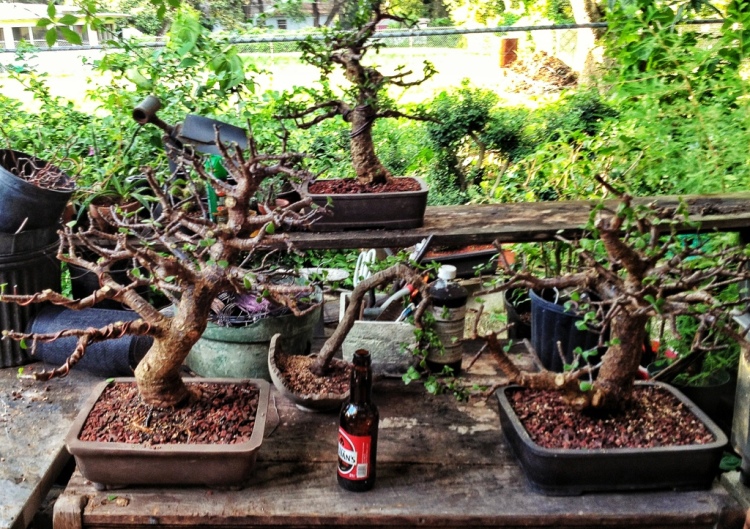
The next step is the most important.
I’ve already alluded to it.
DON’T WATER UNTIL YOU SEE NEW GROWTH.
It is this step that will ensure that the tree will survive the root work.
And it is overwatering at this point that kills them.

The left side of the base rotted from improper initial potting technique.

It ruined the nebari and undercut the base quite a bit.
I removed it from the soil it was in, let the rot dry out and repotted it again. And I’ve kept soil away from the cavity.
The wounds on a portulacaria don’t callous as a tree would. I liken it to scabbing; the wound dries and then the first layer peels and under that is new bark. The scar will eventually disappear after several exfoliations.
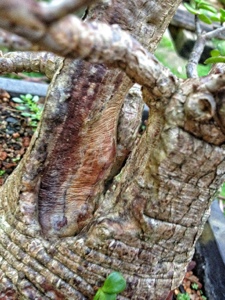
This tree rotted through the middle and at the roots, with careful watering and care it was saved.
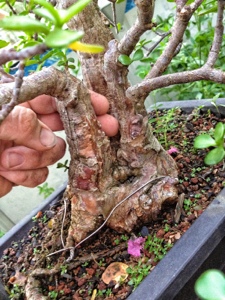
It’s one of my favorites now. I think it looks a bit like a baobab tree now.
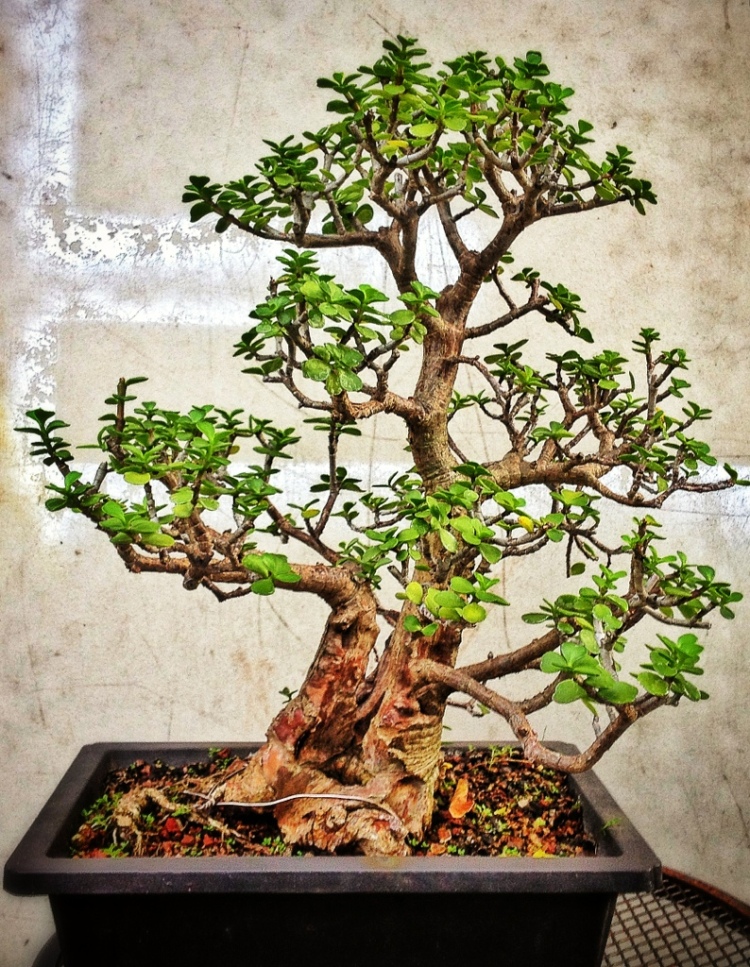
The picture doesn’t do justice to the actual tree (as always).
Next year I’ll repot it into a decent pot and do a little styling.
I will end with this, a little known fact about the portulacaria afra is that it’s edible. Make sure it’s the dwarf jade and not a crassula (true jade) species.
Make sure you haven’t sprayed chemical,et al,on it. Take the tender new leaves and taste. It tastes a bit like Granny Smith apples. It goes good on salads.
It is said that it helps with dehydration. Cattle fed it as fodder drink considerable less. On a hot day in the bonsai garden chew on a few stalks. You’ll be trimming your tree AND staying hydrated, at the same time.
Try a dwarf jade, as a bonsai or just a snack. You’ll be surprised either way.

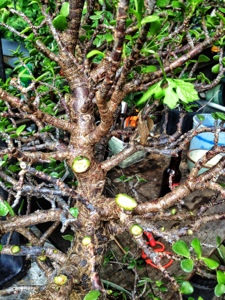



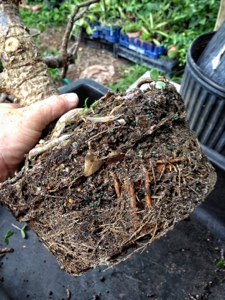
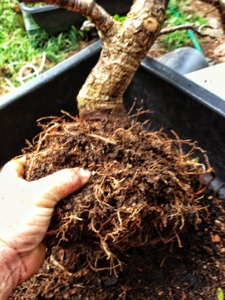

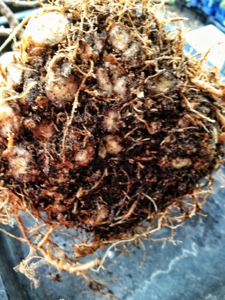

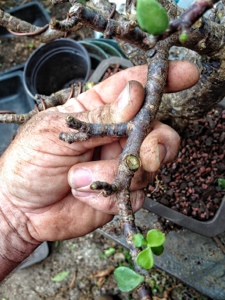
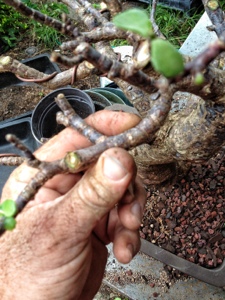
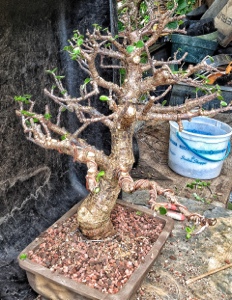
Great article! I have often admired well trained Jade trees but have never attempted one myself. The first specimen you have pictured really represents some successful outside-of-the-box thinking to me. I would never consider training a jade in a literati style because of its heavy foliage but your tree looks great! I’m really enjoying your blog.
LikeLike
Thanks sir!
The literati was originally styled by my friend Rick Jeffery. I just had the opportunity to get it.
The leaves can be reduced by pinching to where they are only 1/4 inch big so don’t let the big leaves deter you.
LikeLike
Great post! I disagree, too, with the purists: if you can get a believable tree image out of it, why not use it?
I often recommend Portulacaria for children. It’s a survivor to begin with, so can better tolerate learning mistakes. (By the kids and by parents trying to help!)
LikeLike
It is one of the two I recommend as well. The other is any microcarpa species ficus.
Thanks for reading!
LikeLike
I didn’t know.
LikeLike
I say ditto to Sean Coleman’s remarks. Great looking tree and very good info. I personally had an old tree, but let it die through abuse and neglect. Now I wish I had it back.
LikeLike
Thanks Lillian
Theres no time like today to get another one.
LikeLike
I have a variegated baby jade some of the leaves are wrinkly and are falling off.
This is my second one. I don’t know what I’m doing wrong. It’s in front of a window and I water when it’s dry. Hope you can help. Thank you
B
LikeLike
Which leaves are doing this? The older, lower ones will do that as the branch grows. If the tip is still normal then you don’t have anything to worry about. Trim it more and you’ll get more leaves lower.
The variegated jade does require more light generally because it has half the chlorophyll.
And once a jade is established you don’t have to let it get bone dry before watering.
Growing anything inside is always going to be more difficult than outside.
LikeLike
How many days must you leave the cuttings out?
LikeLike
It’s hard to say how long exactly due to relative humidity but as little as a day up to about two weeks. If the plant is very healthy the cutting might start to put roots out before you put them in soil.
LikeLike
Thank you so much for this article, it helped me to identify my plant and learn how to properly prune and grow as a bonsai tree. Also, i did not know it was edible, surprisingly it tastes good! haha
Hugs from Brazil =)
LikeLike
Question-is there a technique you know of or recommend that ensures a bifurcated or double leaf pattern. I’ve noticed occasionally when I pinch back on the leaves I sometimes get a double pair but more often a single pair of leaves in return. I prefer the double leaves to get that thick appearance. Any suggestions? Thanks for a wonderful site!
LikeLike
I don’t really have a technique for that. Maybe you’re pinching too close to the bud? Or it only puts out buds that are facing up?
Sometimes they do things and we don’t know why
LikeLike
Hi Adam, Many thanks for this most informative article. I greatly admire the dwarf jade bonsai I have seen and I have gathered a few plants for future training including a variegated variety. Problem is, I have had them for several years and the trunks are just not putting on girth. Some of them are quite tall with fairly short internodes, but no thick trunk – i have given some support to them. Any tips on getting the trunks to fatten up? Any help would be appreciated. Great blog, thanks. Best wishes from Scotland.
LikeLike
Hi David,
The only way to thicken the trunk is to put them in bigger pots. And to grow them outside as much as possible. Or give them supplemental light and root zone warmth (being in Scotland you might just have to do that anyway, even outside in the sun)
Good luck!
LikeLike
Hi Adam,
Many thanks for your advice back in July. I have to say I was a little sceptical about putting the plants outside. However, nothing ventured – nothing gained. The day after your post, I planted one of my Portulacaria – no thicker than a pencil – outside in the ground and facing south to catch the full Scottish sun. No other protection was provided, other than a good base of fired-clay cat litter in the planting hole to improve drainage. Well what do you know, the weather has been kind to us this summer. Today, I have just recovered the plant from the ground to bring it in for the winter. After years of remaining pencil thin, this plant has really thickened up at the base and lower trunk – now, after only two and a half months in the ground, it is nearly 1 inch (2.5cm) in diameter! How’s that for a result! Will pop this plant back outside next year – I may yet manage to get a Portulacaria bonsai worth talking about. It can be done!
Thanks for your insight.
Regards,
David
LikeLike
Fantastic article! How often would you water in Caribbean climate to get max growth? I will be growing outside but I prefer to control watering.
Regards.
Marcin
LikeLike
Once the roots are established you can water every day if you want. That way you can apply a granular fertilizer and push growth.
LikeLike
hello,
Thank for this nice blog!I have a small dwarf jade myself. that i want to repot next month to let it grow ( training pot ) , i’m looking for a good mix of soil that i will put this dwarf jade is.
I’m sorry but i didn’t get what you recommend..
I was thinking of 70% akadema / 30% pumice
Do i have it correct like this?
Can i have use 10-10-10 furtiliser for a dwarf jade? or less ?
Thanks in advance.
LikeLike
Well Ward, your mix depends on where you live, your climate, your watering habit, etc. There is no one “best” mix, no matter what some bonsai professionals might say.
I don’t use akadama because I live in Florida and the rain/heat cycle causes it to break down prematurely. If I only had the two ingredients you mentioned I would use 70% pumice and 30% akadama.
My mix tends towards using lava rock, calcined clay, expanded slate and/or shale, pine bark. I’ve used pumice, Growstone, akadama, charcoal, diatomaceous earth, hydrotone, LECA among other components.
Now, after thoroughly confusing you, you’ll have to figure out some of those situational requirements and then decide which is the best mix.
LikeLike
Hello Adam,
I live in Europe where its 10-20 degrees from spring to summer. I will keep them indoor during winter and outdoor from spring till summer. It likes to rain alot and i can water everyday if needed.
Thanks for your reply , I can order anything from this website :
http://www.bonsai.de/shop/bonsai-soils-c-5.htm?&language=en
I was thinking of buying this pre-ready mixture :
Akadama – Japanese clay soil
Lava granulate
Floraton – peat
Volcanic rock flour, sand and mineral additives
http://www.bonsai.de/shop/product_info2.php?products_id=17549
Is this any good?
LikeLike
If I were you I’d just buy a bag of lava and a bag of pumice and mix them 50-50. That’s a good mix for a portulacaria. You don’t want fine particles like peat or rock flour.
LikeLike
I really need to start accepting that this tree doesn’t need “soil” like i know it .. where you put flowers in.
I have these 2 in my basket for the moment :
http://www.bonsai.de/shop/lava-granulate-5mm-p-5818.htm
http://www.bonsai.de/shop/crushed-pumice-5mm-p-1386.htm
I don’t have to add anything else , correct ?
Thanks for your nice advice. Hope this helps other peops like me.
LikeLike
Those two components will work.
It should be said that all bonsai need “bonsai” soil. Not just jades. A maple, a juniper, an azalea will do well in just these two components.
LikeLike
I’m sorry if i’m asking this at the wrong place .. but what would you advice for a Podocarpus in the same situation? the same mixture?
LikeLike
I would
LikeLike
Thanks alot for your kind replies!! Subbed to your website. Have a very pleasant day!
LikeLike
Es genial tu información lo compartiré en mi pag de facebook portulacarias bonsai, para todos los que me leen ahí visiten esta información.
Saludos.
LikeLike
Hi Adam, great website. Thanks for sharing your knowledge, I and many others are in debt to you. As a South African, myself, maybe I can share a bit of my small amount of knowledge.
In Afrikaans ‘spek’ means ‘bacon’. One could also say ‘pork fat’. It gives me a chuckle seeing ‘fat pork tree’ all over the internets. 🙂
LikeLike
Nice! Thanks for sharing that.
LikeLike
Very nice demonstration. Just one correction. Portulacaria afra is not a dwarf jade plant. Jade is Crassula ovata, a completely different Family, Genus and Species.
LikeLike
One of portulacaria afra’s common names is dwarf jade. It is what most Americans and Europeans call it. As long as the binomial name is used to distinguish it, I think we are fine
LikeLike
Hi Adam , I live in Natal South Africa, I have had a healthy indoor Spekboom Bonsai since December , which has now started losing its leaves , I had been watering once a week but increased this as we went into winter and we turned on the heating. I think I have over watered it, the leaves are dimpled, do I just leave it to dry out now, and how often should I be watering? Still once a week even though we have underfloor heating on?
LikeLike
Hi Michelle
I have very little experience with indoor bonsai, especially jade. But I do know that those who follow schedules tend to hurt them more often than not. You need to be looking at the soil and watering when needed, not what it says on your care card.
I’d get the tree outside except in the coldest times.
LikeLike
Hi Adam,
great blog you have. Do you have any recent pictures from this georgeos tree?
LikeLike
There are several updates on all the trees in this post. I wrote that one in 2012. If you scroll through my Instagram I’m sure you’ll find some new pics. The last post I wrote on Portulacaria was here:https://adamaskwhy.com/2015/07/20/the-keep-myself-sane-tree/
LikeLike
Well done! I have lived in the Eastern Province of South Africa for many years and have grown the spekboom as a bonsai for ages. I found out how adaptable they are almost by accident. They grow quickly and if left in the sun need very little care. Once trimmed they can survive for a while indoors but when they drop leaves it is time to move them out again.
LikeLike
Hi Adam. Many thanks for this incredibly detailed article and accompanying images. I received a ‘spekboom’ which appears to have been well begun, for Xmas. I believe your site is just the place to keep myself and my tree sane. I’ll keep checking back here as things progress.
The spekboom is my second bonsai, my first being a black monkey thorn, a type of acacia common here in South Africa. It’s remarkably resilient and takes to shaping beautifully. Thanks once again.
LikeLike
I am not getting the ramification I want when I pinch the tree back. Is there something I am missing? Quite often I get only one new shoot at the end I have just pinched and not the two shoots I want. Am I doing something wrong?
LikeLike
Are you fertilizing enough and is it in full sun? And what is your watering schedule?
LikeLike
What are your rules of thumb when it comes to P. Afra pruning. I know you said trim the ones growing straight up as well as those that are “Superfluous”…. how do you deem if it is in an awkward spot or is Superfluous?
LikeLike
The answer to that goes to basic bonsai pruning. Any branch growing up or down, on the inside of a curve, more than one from one spot, growing opposite each other etc.
LikeLike
And would you say these are consistent rules with all species?
LikeLike
These are pruning techniques we use for bonsai, in order to build a branch. So yes,it does apply to most species.
LikeLike
I loved this article! Even better is that I stumbled upon it so it was a very nice surprise. I just recently got myself a P. Afra so thank you for all this wonderful insight on the tasks that are before me. I do have one question which is: what type of soil are you using and where did you get it from? Since this will be my P. Afra (and first bonsai overall) I am unsure as to what soil would be best. I have done research and most fingers point to a semi-fine gravel; fine enough that it is a soil but large enough to not condense when wet like sand.
LikeLike
I use a formulation of lava rock, expanded shale and slate, calcined clay and pine bark. I make it myself. You can get a similar mix from many bonsai outlets. I sell it for $9 a gallon plus shipping.
LikeLike
How to buy
LikeLike
Hi Adam
I keep my P. Afra in the kitchen window all year round, I know that’s not recommended but it seems to do ok, there is no heating in there except for when cooking, I believe with most species the best time to prune and take cuttings is spring but with this being indoors all year, does this still apply?
Basically, I want to do it now!
Thanks
LikeLike
You could do it now, being indoors
LikeLike
Thanks for that Adam, much appreciated
That’s tomorrow night sorted…
LikeLike
All the cuttings took, thanks again Adam
LikeLike
Reblogged this on Wolf's Birding and Bonsai Blog.
LikeLike
Awesome information, I wish I’d read this before I came across some old material . This really helps me tremendously. Thank you Ken
LikeLike
tengo un afra desde hace 15 años bonsai lo riego 2veces diarias pero nunca ha florecido estoy en un clima desertico por eso los 2 riegos como hago para que floresca
LikeLike
I’ve never seen flowers either. You may want to withhold water and see if that makes it Flower
LikeLike
I have purchased one of these little beauties a couple of weeks ago as pre-bonsai material. It’s really ready to put in the proper soil, though the roots are not as “vigorous” as the roots of the one you show here (I’ll be gentle). I have plans to trunk chop the tree to get some movement, but plan to do that after it’s growing happily. Your instructions (thank you for them, because I’d totally fail without them), tell you to put it in its new soil and wait til it begins to grow new leaves before watering. This little tree is so vigorous, I’m not certain I would be able to know when new leaves are growing. Do you think it would be safe to lightly prune it? I’d definitely be able to see the new growth then.
Sorry for the silly question, but bonsai is, itself, somewhat counter intuitive when you come from working with house plants; cultivating Portulacaria Afra seems to be a new level of counter intuitivity.
LikeLike
You’ll be able to tell. The new growth will be a lighter green than the old foliage.
LikeLike
Thank you so much for this article! My boyfriend gave me a beautiful and tiny dwarf jade and I kind of panicked because I have several orchids and know exactly what to do with one but a Bonsai is kind of a whole new level for me. Will it be fine if I leave it next to a window where it will receive light almost all day long? I live in a apartment so have no garden nor balcony to leave it outside to thrive. I live in south america tropical weather all around the year. Is it a good option to leave it next to the window? I really want it to live and thrive and have a thick trunk if possible, I just really have no idea what to do with my little treasure and am terrified of killing it.
LikeLike
If you can give it its own light as well that would help it. You’ll have to watch the watering carefully inside. It will adapt to the window sill though
LikeLike
Thank you so much, I will check on the light to help it out. BTW what fertilizer do you recommend? chemical or organic? I have seen that usually what some people recommend is a slow ralease organic fertilizer, the only one I found was humus (worm fertilizer, not sure its name in English). Any chemical ones work?
Thank you so much for your help
LikeLike
Its almost july in Cgarleston sc, hot and muggy, should i wait till later in year or is now a good time time to trim the roots and begin my forest? Have them in individual pots right now, trunks are ready!
LikeLike
Now is the time! Just remember to tie them in so they don’t move and don’t water for a week or so. Good luck, sounds awesome
LikeLike
Do you trim the under leaves on these branches to maintain lines, like you would with other trees?
LikeLike
Yes you do, as well as those on top.
LikeLike
Thanks Adam!
LikeLike